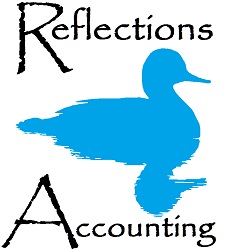
Information
About Us
Tax Free Savings Accounts
Starting January 1, 2009, Canadian residents 18 years of age and over have available to them a tax-free savings and investment vehicle: The Tax-Free Savings Account.
To open a TFSA, one only needs a Social Insurance Number and proof of age.
Like an RRSP, the TFSA increases in Contribution Room each year. For 2009, the investor may contribute $5000 to the TFSA. Each subsequent year, $5000 will be added to the Contribution Room.
Unlike an RRSP, you do not lose your contribution room when you make a withdrawl. The amount withdrawn is added to your contribution room the following year along with the annual $5000.
Example:
In 2009 you contribute $4000 to your TFSA. You earn $400 interest. At the end of the year, you withdraw $4400. In 2010 you have Contribution Room of $10,400. That is $5000 for each of two years, plus the $400 earnings.
When taking money out of a TFSA, please remember that any amounts withdrawn in the year will not be added back to your Contribution Room until January 1 of the year following the withdrawl.
The CRA plans to index the $5000 amount, but only in increments of $500. The first indexing occured in January 2013, the fifth year of the TFSA program.
The TFSA is not just a savings account. It is an investment account. Any investments that are eligible for RRSP purposes are also eligible for TFSA purposes. This means your TFSA is eligible to earn Capital Gains and Dividends in addition to Interest.
Tax Planning
If you invest more than $5000 per year, plan carefully which investments you hold in your TFSA. Capital Gains are 50% tax-exempt. Two types of Dividends come with special Tax Credits. Interest is fully taxable. It is wise to prioritize which investments to put into the TFSA first, based on what tax bracket you are in for the greatest tax savings.
The lowest Federal Tax Bracket for 2009 is anticipated to be on taxable income of $38,832 and less. Assuming equal income from all investments, in this tax bracket, prioritize your TFSA investments as follows: Interest, Capital Gains, Dividends, Eligible Dividends. In all other tax brackets, prioritize your TFSA investments as follows: Interest, Dividends, Capital Gains, Eligible Dividends.
Of course, if you expect a higher rate of return in any one of these investment types, that is usually the one that should be held in your TFSA.
| Marginal Tax Rates on investment types by expected Federal Tax Brackets for 2016. Figures include BC provincial tax. | ||||
| Tax Bracket | Interest | Capital Gains | Eligible Dividends |
Non-Eligible Dividends |
| up to 38,210 | 20.06% | 10.03% | (6.84%) | 8.27% |
| 38,210 - 45,282 | 22.70% | 11.35% | (3.20%) | 11.36% |
| 45,282 - 76,421 | 28.20% | 14.10% | 4.39% | 17.79% |
| 76,421 - 87,741 | 31.00% | 15.50% | 8.25% | 21.07% |
| 87,741 - 90,563 | 32.79% | 16.40% | 10.72% | 23.16% |
| 90,563 - 106,543 | 38.29% | 19.15% | 18.31% | 29.60% |
| 106,543 - 140,388 | 40.70% | 20.35% | 21.64% | 32.42% |
| 140,388 - 200,000 | 43.70% | 21.85% | 25.78% | 35.93% |
| Over 200,000 | 47.70% | 23.85% | 31.30% | 40.61% |
Because the earnings in the TFSA are tax-free, no deductions are permitted for carrying charges (interest expense, investment council fees). If you are able to invest more than $5000 per year, plan to incur these expenses on investments held outside of your TFSA.
Penalties
The CRA imposes penalties for over-contribution to a TFSA. Any month in which an over-contribution exists, you will be subject to a 1% tax on the excess amount. CRA will use discretion to waive the penalty if you can show that the over-contribution was due to a reasonable error and that you took steps to correct the situation without delay. This is a one-time opportunity to correct a mistake. After that, you should be sufficiently familiar with the rules to avoid committing the mistake again, and the CRA will enforce the penalties.
Separation and Divorce
Upon separation or divorce, assets held in a TFSA may be transferred from one spouse to the other. Such a transfer does not reinstate the contribution room of the transferor nor use up the contribution room of the transferee.
Death
Following the death of the TFSA holder, all future earnings of the TFSA become taxable. It is possible for the TFSA to be transferred to the TFSA of a surviving spouse, without the survivor's unused contribution room being affected.
Attribution
With other investments, when one spouse gives the other spouse money to invest, the resulting income is attributed to the first spouse. When the money is invested in a TFSA, the attribution rules do not apply. In this case, both spouses may invest their maximum contribution per year in their own TFSA regardless of which spouse earned the money so invested.
However, if the money is subsequently withdrawn and invested outside of the TFSA, attribution rules come back into play. This results in the income on the new investment being taxed in the hands of whichever spouse provided the money for the original TFSA investment.
More information is available on the CRA website.
Mission Statement
To provide superior accounting services tailored to each client’s unique situation.